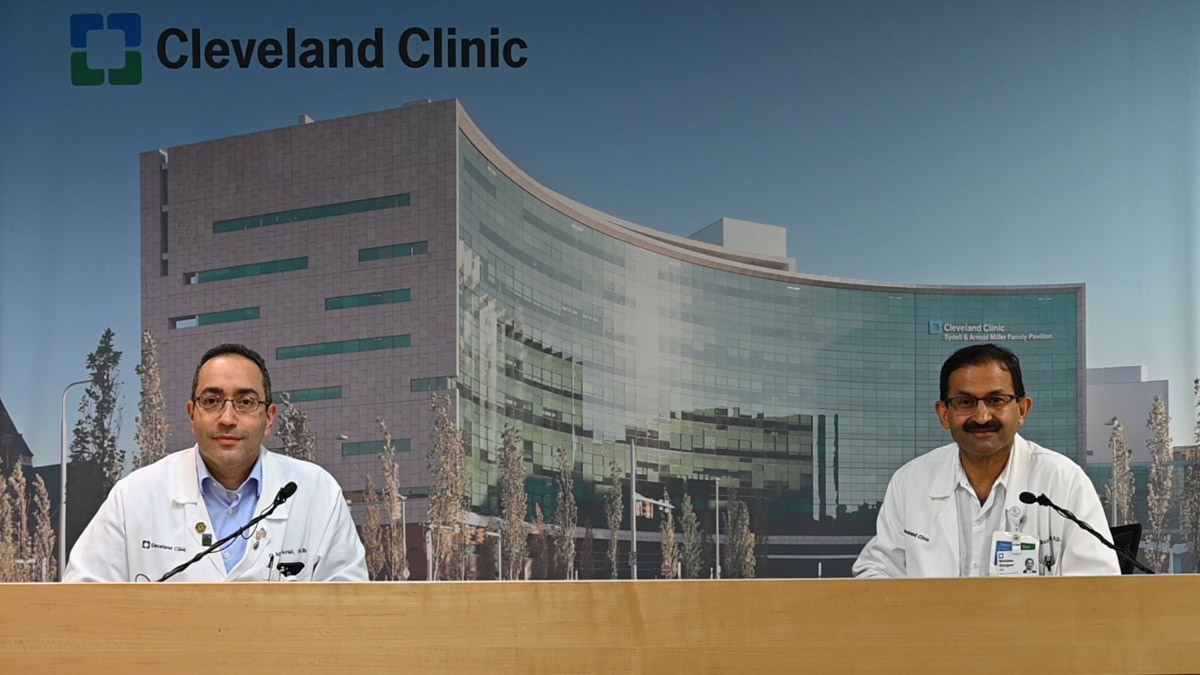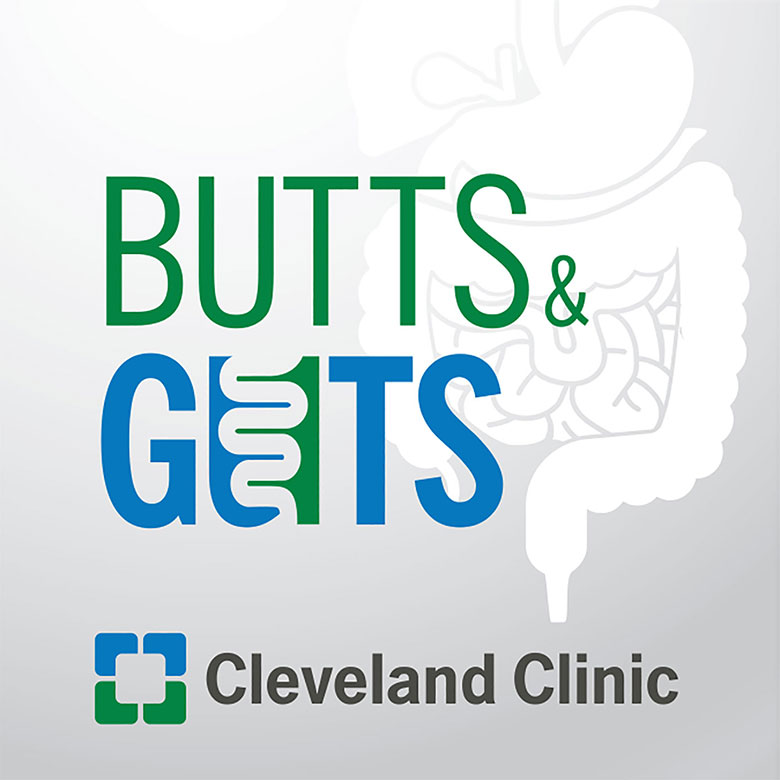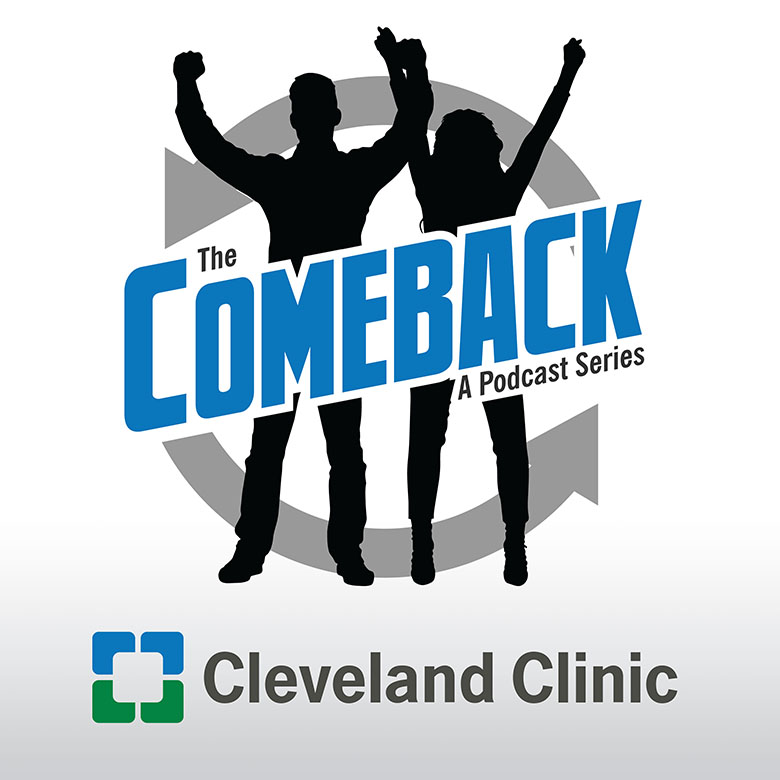Atrial Fibrillation – Part 2: Your Questions Answered

This two-part program answers all your questions about Atrial Fibrillation. Part 2 provides answers to questions about medications used to treat atrial fibrillation, efficacy related to stage of disease and what you should know about blood thinner medications and alternatives. In addition, the doctors discuss cardioversion, types of ablation, the hybrid convergent procedure and the WATCHMAN device.
Last week’s segment (Part 1) answered your questions about types of afib causes and risk factors, symptoms, diagnostic tests and how these factors help to determine treatment with medications or ablation and the use of blood thinners.
Questions are answered by atrial fibrillation experts Dr. Oussama Wazni and Dr. Mandeep Bhargava.
Transcript
Welcome to Love Your Heart, brought to you by Cleveland Clinic's Sydell and Arnold Miller Family Heart Vascular and Thoracic Institute. These podcasts will help you learn more about your heart, thoracic and vascular systems, ways to stay healthy and information about diseases and treatment options. Enjoy.
Oussama Wazni:
Welcome back. This is part two of ask the heart doctor about atrial fibrillation. I'm Oussama Wazni and with me is Dr. Mandeep Bhargava. We talked a lot about atrial fibrillation, its causes, its symptoms, what the goals of therapy are. Let's go into some more specifics now and talk about the medications that can be used for maintenance of sinus rhythm or in other words, treatment of atrial fibrillation.
Mandeep Bhargava:
Sure. I usually tell patients that those drugs which keep your normal rhythm or what we call as rhythm control medications, also call as anti-arrhythmic drugs can be largely divided into three groups, either sodium channel blockers, which are like flecainide and propafenone or potassium channel blockers, which are like sotalol and dofetilide or amiodarone, which is a potassium channel blocker with some sodium channel blocking activity.
All these drugs can be used in different stages of atrial fibrillation. Some work better in paroxysmal atrial fibrillation, which is the earlier stage. Some work better in persistent atrial fibrillation and all these drugs have some risks in the range of half percent per year or less, whether they could cause bad life threatening arrhythmias from the bottom chambers or lung problems but there are ways to mitigate those risks by taking them with some precautions, with some caution. In fact, some of these drugs like dofetilide and sotalol, we administer only as inpatients, at least for the first six doses. But once we find out as to which patients would tolerate them safely, then long term, most patients would do well with them, but would need some surveillance every so often, whether every three months or every six months in terms of their blood work, ECG, lung function tests and things like that.
Yes, you do need these medications long term unless at some point of time they decide they want to be off the medication and consider an ablation or the medication is not working for them, but each of these drugs has to be taken with some caution, there is no doubt.
Oussama Wazni:
What is the long term efficacy of these medications? Do they become less effective over time? You get this question all?
Mandeep Bhargava:
Yeah, I think that is great. And I'm not sure I want to pin down the medications and say that they become less effective, but it's important to know that atrial fibrillation is a progressive disease. And I think the disease just outgrows the medication.
Oussama Wazni:
Overpowers the medication.
Mandeep Bhargava:
Exactly, I think that would be a great way to say it because it's a progressive disease and as it outgrows the power of the medication, then we either have to use a higher dose or a different medication which is stronger. But in general, I think most medications would have an efficacy in the range of 40 to 70%, based on the stage of the disease. But it's important to know that it is not like antibiotics that you take a course of the pills and you're done. You are using the medications to suppress the disease and you have to take them as long as you wish to suppress the disease in most patients, unless we identify a reversible factor where it will go away after some time.
Oussama Wazni:
Are you aware of any natural remedies for it?
Mandeep Bhargava:
I don't think there is any substitution for living life the healthy way and not letting it have happened the first time. But I think most of these medications you have to be on for long term unless an ablation has the potential to cure you.
Oussama Wazni:
Along the natural remedies, just to say, I would say again, this is all these treatments that we're talking about are based on a foundation of healthy lifestyle and prevention. Natural remedies will include a healthy lifestyle, losing weight if somebody is overweight, exercise and staying fit, if they're not so, and also managing sleep apnea. All of these are things or strategies that can decrease the burden of atrial fibrillation. We now are controlling the AFib using these anti-arrhythmic drugs, but we also talk that one of the most important aspects of managing AFib is prevention of stroke. What are those medications? They fall under blood thinners, but what are the choices now that we have with blood thinners?
Mandeep Bhargava:
I think that has been one of the most revolutionizing change in the last few years, where many years ago we had patients choose between aspirin and warfarin. And warfarin was the only available blood thinner which was a difficult and cumbersome medication to take because there is no standard dose. You have to get a blood test every so often to find out whether you are on the right dose. It has lot of interactions with things that we eat and other kind of drugs that we take. And again, we had this thought that patients who are at a lower risk may benefit from aspirin and different dosages of aspirin. I think what we've learned in the last 10 to 15 years is that aspirin does not seem to have much role. And I'm sure if you have any comments on that I'm happy to welcome that.
Oussama Wazni:
No, I totally agree.
Mandeep Bhargava:
We first learned that the higher dose is not any better than the lower dose, but now it seems that the lower dose also does not seem to offer much.
Oussama Wazni:
What I've learned over the last 10 to 15 years is that actually aspirin has no role in stroke prevention in patients who have atrial fibrillation. It may be needed for coronary disease, but in AFib stroke prevention it has no role. And the only thing I see from it is actually an increased risk of bleeding without too much protection from stroke.
Mandeep Bhargava:
And I think that is what we have also learned from our interventional colleagues that even its preventive a role, even in patients to prevent the role of a primary heart attack has kind of been challenged.
Oussama Wazni:
For the blood thinners.
Mandeep Bhargava:
Yeah, so the other important thing that has happened is that we have now these four very important drugs, whether it is apixaban, of rivaroxaban and dabigatran and edoxaban, which are some newer blood thinners, which have revolutionized the management in many ways, because one, they don't need a blood test to monitor what is the right dose for every patient. They have minimal interaction with things that we eat and other drugs. They have a kind of a one size fits all approach unless people have an abnormal weight, very low or very high or if people have abnormal kidney function, because most of them are excreted by the kidneys. Again, all these drugs are either as good as and as safe as warfarin or a little better. Would you agree?
Oussama Wazni:
Yes, I totally agree.
Mandeep Bhargava:
And although we individualize each of these drugs for every patient in some situations, in most situations, it is important to know when one should not be used. Just like anti-arrhythmic drugs, there are some that you cannot use when somebody has a structural heart problem or some that you cannot use when people have a kidney problem, same thing with these drugs. Each one of them have a little caveat that you have to use them differently when people have advanced kidney disease or an advanced age or things like that. But in most situations, I'm sure you would agree that they have a very equivalent role to play.
Oussama Wazni:
Yes. Basically the message here is that these new medicines are, I think have a lot of advantages over warfarin and they're mostly equivalent to each other. And depending on liver function and most importantly kidney function.
Mandeep Bhargava:
But I think another important thing to tell viewers here would be, when do you think that warfarin is your only choice?
Oussama Wazni:
There are only two conditions when warfarin is the only choice, I think. One is when you have a mechanical valve. When there is a mechanical valve, warfarin is the only choice. And in those patients, we cannot use any of the newer medications. And the other one is when there is mitral stenosis from rheumatic heart disease. If there's rheumatic heart disease, then none of these anticoagulants are indicated in this and we have to use warfarin. Any other condition, actually even with the kidney dysfunction and all that, there are dosing adjustments that can be made. But in these two conditions, mechanical valves and mitral stenosis because of rheumatic heart disease, we cannot but use Coumadin. It has to be warfarin or Coumadin in those patients.
Mandeep Bhargava:
Yeah. And even the newer ones, they can have those modifications in patients with advanced kidney disease or renal failure. But I think many times in end stage renal disease or patients on dialysis, maybe it turns out easier to be on warfarin rather than play around with the difficulties with these medications I think.
Oussama Wazni:
But it's not an absolute what we call contraindication to those medications. Now we're going to shift gears here a little bit and we can answer, there's a question on does Eliquis stop atrial fibrillation? Just to put it out there, these are blood thinners, do not stop atrial fibrillation. And this is, we're going to come back to that theme when we're talking about left atrial appendage closure with WATCHMAN, but let's move on to cardioversion and the biggest question I get from my patients is well, how many cardioversions can I have?
Mandeep Bhargava:
There is really no limit to the number of cardioversions that people can have but at some point of time, we figure out that either it is a futile strategy or patients tend to get frustrated. But when it is a necessity that our patients who've had 20, 25 cardioversions also. But a cardioversion is not something that really damages your heart and you can have more than a few as and when is needed because the cardioversion puts you back into rhythm, does not hold you there.
Oussama Wazni:
It does not maintain. This is a very important distinction here is that a cardioversion gets a person back to normal rhythm, but it does nothing to maintain sinus rhythm. To maintain sinus rhythm, it's going to have to be either an anti-arrhythmic drug medication or we're going to shift now to ablation. Now we have the patients on anticoagulants, we have them on an anti-arrhythmic drug, they have had a cardioversion, but the AFib overpowers these drugs and now they're back in atrial fibrillation. When should we consider an ablation?
Mandeep Bhargava:
We talked in the last session about what are the best times or what are the best patients where an ablation should be considered? But again, patients who are not maintaining normal rhythm and feel better in normal rhythm and the drug is not able to hold them in normal rhythm, I think are the most classical patients to have an atrial fibrillation ablation. But now as ablation techniques are getting better, getting safer, getting more effective and we are also learning some very important things that is that an ablation works much better if you do it earlier, rather than later. We also learned that it may probably slow down or even prevent the progression of disease from paroxysmal to persistent atrial fibrillation.
Mandeep Bhargava:
I think over the last 20 years, I've just seen that our threshold, and I'm sure you would agree, to offer an ablation to a majority of the patients has only come down. Again, patients who are symptomatic, not tolerating medications, not doing well with medications or sometimes it is better to be aggressive earlier in patients who have a more aggressive form of the disease, like patients who have heart failure or heart muscle dysfunction as a consequence of atrial fibrillation.
Oussama Wazni:
Yes. Now we have decided that we're going to do an ablation, what modality should we use? There's a lot of them now and people are getting confused. Should we use radio frequency? Should we use cryoablation? Should we use electroporation? Should we entertain a surgical ablation? How would you, Dr. Bhargava, guide our patients to one or the other modality? And on what basis?
Mandeep Bhargava:
I was so very sure not the Dr. Wazni was going to put me on the spot here, because it's always a very difficult question as to whether a cryoablation or a radiofrequency ablation is better or one modality is better than the other. I think there is a lot of bias in terms of what an individual physician has to offer, but I think there is a lot of common ground between each of these strategies and that is that we are trying to isolate the pulmonary veins from the left atrium and whichever way you can do it best is the best for the patient.
Mandeep Bhargava:
I think the results are there to show that the cryoablation and I'm sure you may have a few words to share there, may work better in the initial phase of the disease, but at least my personal experience has been that in the most advanced forms and that is what we tend to see most often, where we have a lot of redos from other places and more advanced form of the disease being a referral center. I think in those patients, my bias has always been to use radiofrequency energy as far as ablation is concerned.
Oussama Wazni:
Before we go on, so I tend to tell my patients is that I would do whatever your physician is comfortable with in the early cases, whether it's cryoablation or radio frequency ablation, because the goal of treatment is the same, is isolation of pulmonary veins and if your doctor is used to doing it, using pulmonary cryoablation then have cryoablation. If you're a doctor is used to doing it using radiofrequency ablation, then it should be radiofrequency ablation. Now, when the AFib is more advanced in our experience it's been that with radiofrequency, we will address it in a more comprehensive fashion. Although more recent studies now have shown that cryoablation may be also reasonable for those with more advanced atrial fibrillation. Now, there's also a lot of talk about electroporation. Could you tell us what is different about electroporation? And why are people so excited about it?
Mandeep Bhargava:
I think a lot of it is still evolving and I don't think we have all the final answers on that, but I think it is just at this point of time, important to understand that is a technique where we are using a different form of energy for shorter periods of time and the hope is that it will deliver energy in a safer focal manner and probably with more long lasting benefits too. But I don't think it is available as prime time. Maybe you have some other.
Oussama Wazni:
My comment on this is that this is still in development and it's still really in the research phase and clinical trials so we don't have the final answer with respect to electroporation. I would like to end this section right now here in talking about a little bit about the Convergent Procedure, because we've had some experience with it. And also it was recently highlighted in some important studies in the medical congresses. Conversion Procedure basically is a hybrid approach where the surgeon would go behind the heart and ablate the back wall of the left atrium and then the electrophysiologist will ablate from inside the atrium and using such a strategy was better than just ablating around the veins endocardially. Now here at the Cleveland Clinic, we ablate also from the inside. We ablate the back wall. To me, the Convergent Procedure showed that it is important to ablate the back wall, but it's also important to ablate it in a safe way.
And one way, one safe way to do that is to get the help of a surgeon to do that. But also at the clinic, we add one more thing to that, is in that we also clip the appendage. We put a clip over the appendage and we close it so that the risk of stroke in the future decreases without the need for taking long term anticoagulation. At the clinic now we are reserving this Convergent, we call it the Convergent Plus Procedure for patients who failed previous ablations and for patients with advanced atrial fibrillation, when they have a very enlarged left atrium. Now, I did comment now here on the clip to close the appendage. Now we're going to shift the discussion towards the WATCHMAN because we have a lot of questions from our patients regarding the WATCHMAN. I'm going to start just by stating two facts, and then we will switch gear to Dr. Bhargava.
I just want to comment here quickly that the WATCHMAN does not decrease the burden of atrial fibrillation. This is very important because we always get asked this well, will I feel better when I get a WATCHMAN device? You may feel better because you don't have to take a blood thinner, but not because the atrial fibrillation burden is less. Another thing, the WATCHMAN is basically a device to close the left atrial appendage. Now the question to Dr. Bhargava to clarify, why would we want to close the left atrial appendage?
Mandeep Bhargava:
As we talked initially, there are two important goals of managing atrial fibrillation. One is to reduce the risk of stroke and one is to improve quality of life and heart failure symptoms. Whether it is blood thinners, whether it is removing the appendage surgically or whether it is the WATCHMAN device, the primary goal of each of these treatment strategies is to reduce the risk of stroke because we have learned that atrial fibrillation predisposes to the risk of formation of clots. We've also learned that most of these clots form in the left atrial appendage. If you can remove the appendage or isolate it from the rest of the left atrium or the left upper chamber, by that you may be able to reduce the risk of stroke.
But none of these strategies helps in treating the atrial fibrillation per se or the symptoms of palpitations or the symptoms of heart failure. For that, one needs either a cardioversion to put them in normal rhythm or drugs to keep them in normal rhythm or an ablation to keep them in normal rhythm. These are two parallel strategies, like the two parallel tracks of a railway line, where both are equally important. At the same time, both things are trying to focus on two different goals, but both are important in every patient simultaneously and cannot be substitutive of each other.
Oussama Wazni:
Why would we want to consider a WATCHMAN device?
Mandeep Bhargava:
For the WATCHMAN device particularly, I think the important thing to understand is that by blood thinners, we are reducing the risk of stroke, but that protection comes at a price and that is the price of bleeding. And that risk of bleeding can be usually low in most patients, but in some patients, the risk of bleeding may be high enough that whatever protection the blood thinners offer in terms of protecting against the risk of stroke is offset by the risk of bleeding. And at this time we have very good data to show that you can offer the same protection of the risk of stroke by offsetting that risk of bleeding by putting in a WATCHMAN device.
But I think as Dr. Wazni alluded to earlier, we are now trying to get to the next level where we are trying to see that for patients who are not at an increased risk of bleeding, but have a risk of stroke, can the WATCHMAN try to help them also long term by trying to achieve a situation where they can be off the blood thinners, even if they don't have a higher risk of bleeding? You are the PI on that study that you talked about, the OPTION trial the last time. And I know that you're aware of a lot of other trials coming on, regardless of simultaneous use with an ablation. Would you like to allude on that, Dr. Wazni?
Oussama Wazni:
Yeah, so the answer basically, that Dr. Bhargava just told us, answers the questions we had that were submitted to us. If the risk of stroke is moderate to high and it is necessary to take a blood thinner, but you have a bleeding problem and this is what the questions are, then a WATCHMAN is very reasonable. That is the answer to that. Somebody who has bleeding here due to cancer and another patient who had a GI bleed, yes, a WATCHMAN is reasonable to prevent stroke and avoid long term anticoagulation.
Now we are moving the therapy forward in that in those patients who get an ablation and they think that they're, I got an ablation, why should I stay on a blood thinner? Really addressed this. And one way to address this is to be enrolled in our study called the OPTION trial, where we will randomize patients to continue taking anticoagulants versus closing the appendage with the WATCHMAN. The results of the study will not be available until another three to five years, probably, but it is possible that one day we will do the ablation and close the appendage at the same time based on evidence.
Now there's a question here and the last one here is, can we do the WATCHMAN and ablation together? And the answer is yes. Actually we are one of the very few sites in the United States that offer these two procedures together. But for now we do it for patients who cannot be on oral anticoagulation for a long period of time because of recurrent bleeding issues or concern for the current bleeding issues. What we do is we do the ablation, we implant the WATCHMAN, we will continue the anticoagulants for another three months and then stop the anticoagulants. And we've had actually very good outcomes so far with that.
One last thing I want to mention is that the WATCHMAN does not stop AFib because this is a recurring question. It does not stop AFib. It does two things actually. It prevents stroke and it helps us avoid long term oral anticoagulation. And I think we will stop this section right now. We will continue with you in part three at some other time. Thank you very much.
Mandeep Bhargava:
Thank you.
Thank you for listening. We hope you enjoyed the podcast. We welcome your comments and feedback. Please contact us at heart@ccf.org. Like what you heard? Subscribe wherever you get your podcasts or listen at clevelandclinic.org/loveyourheartpodcast.
Subscribe: Apple Podcasts | Podcast Addict | Buzzsprout | Spotify
Atrial Fibrillation – Part 2: Your Questions Answered

Love Your Heart
A Cleveland Clinic podcast to help you learn more about heart and vascular disease and conditions affecting your chest. We explore prevention, diagnostic tests, medical and surgical treatments, new innovations and more.


